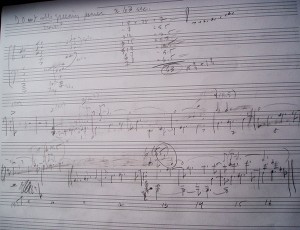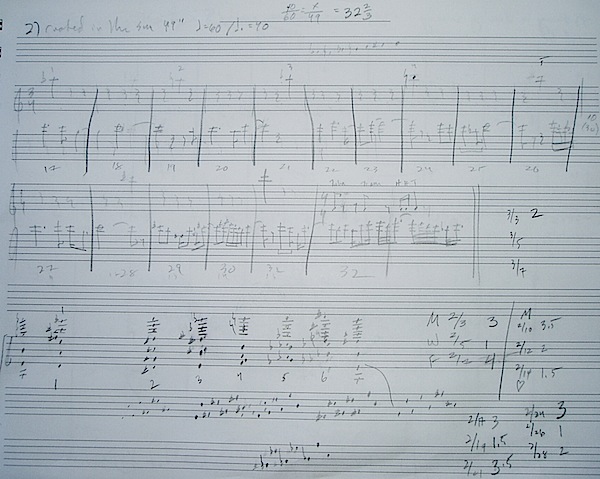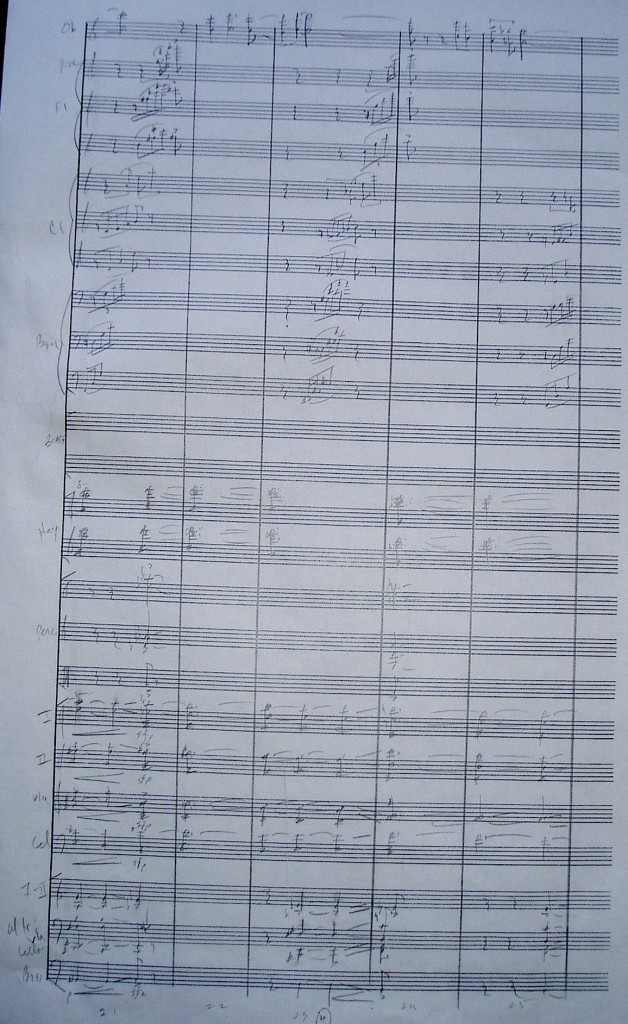“rooted in the sun”
Above is the sketch of this section. You’ll notice that I’ve indicated the target length, 49 seconds, at the top of the page. In previous posts, I’ve discussed how I arrived at this number: there are seven lines in the poem, and this line has seven syllables (in the original Latin), hence 7 x 7 = 49. Not too original, but a starting place, at least. That number led me to compose 15 measures of 3/4 and one measure of 4/4, at a tempo of quarter=60. The numbers under each measure are measure numbers. The top line of music in each system is the apex of a rising gesture that occurs every seven beats in the woodwinds. Notice that it rises by a half-step with each iteration. The bottom line of music is a tune derived from Hildegard’s chant. The pitches are taken directly from her music, while the rhythm is my own. On the bottom of the page, you’ll see some complicated-looking chords. These are the notes you’ll hear in the string section, played with tremolos, throughout this section of the piece. In fact, the chords themselves are not very complicated—they are simply various arrangements of stacked fifths, a holdover from the first section of the piece. I’ve tried to re-voice each chord, however, to keep the harmonies fresh and somewhat unexpected.
And here is a page of the full score, measures 21-25. I’ve rearranged the layout of the page to accommodate the instruments I’m using in this section of the piece. The oboes have the chant-derived melody in octaves (top of the page), and the remaining woodwinds (flutes, clarinets and bassoons) have the rising, “rooted” gestures. The strings are divided here into a solo septet (there’s that number again) and the remaining string section, doubled by the harp. The percussion (vibraphone and crotales) accent the top of the woodwind gesture, just to give it a little more sparkle and punctuation. The brass are silent in this section.




Leave a Reply